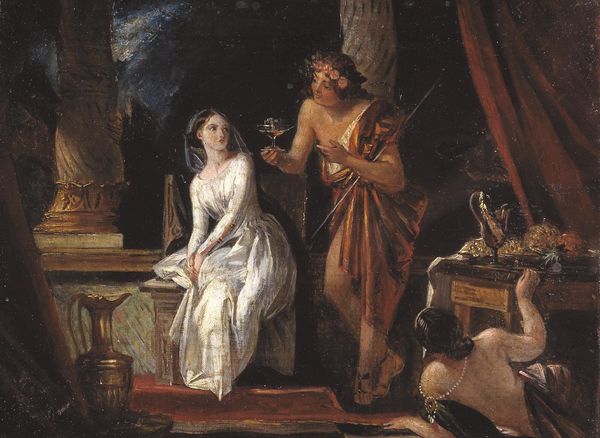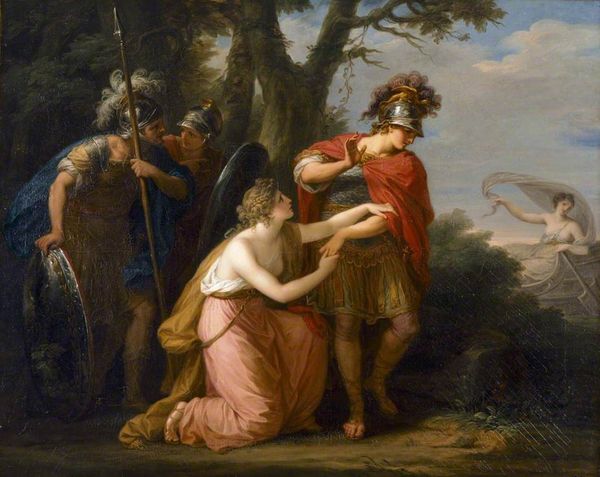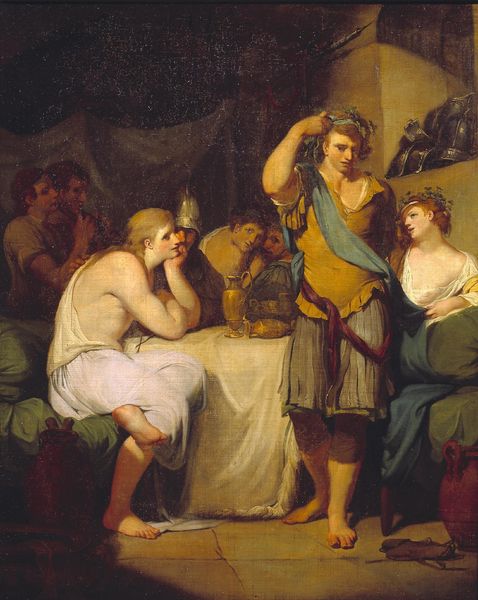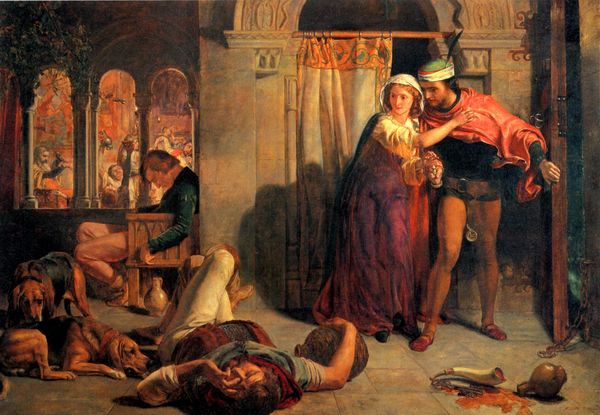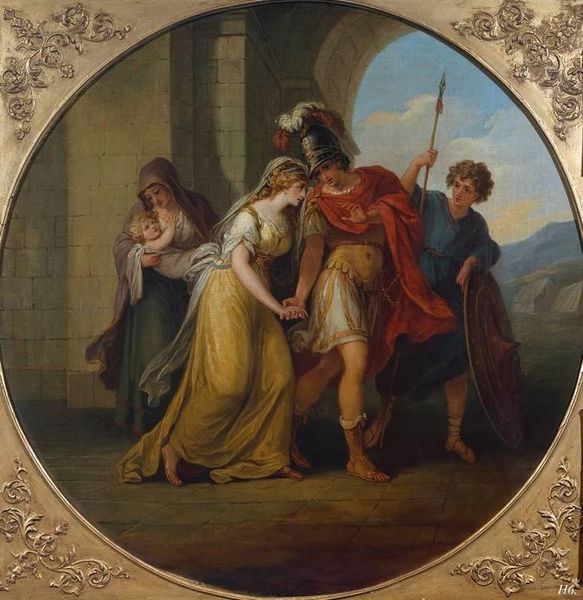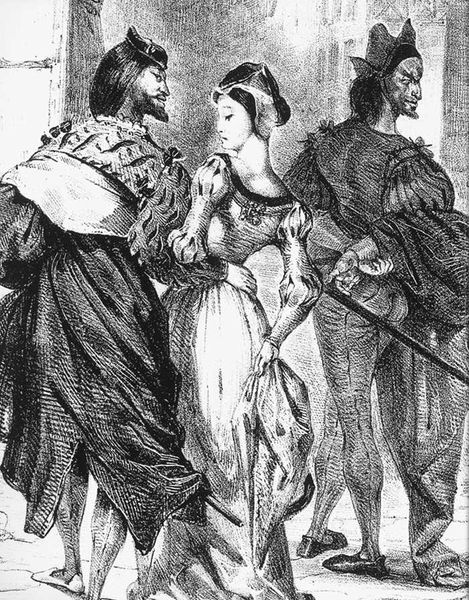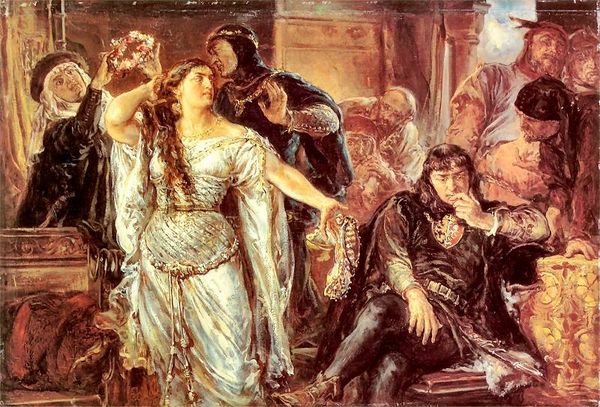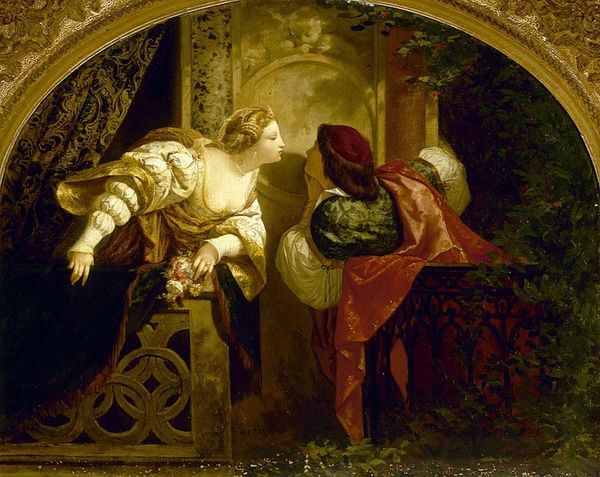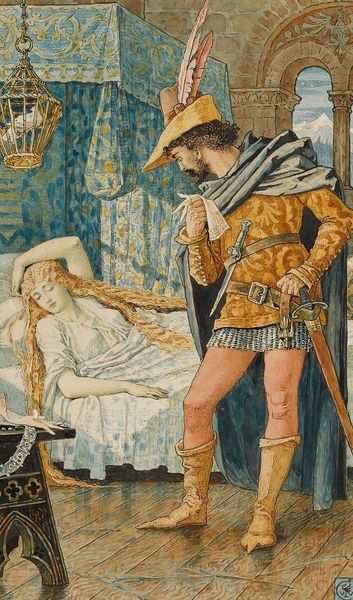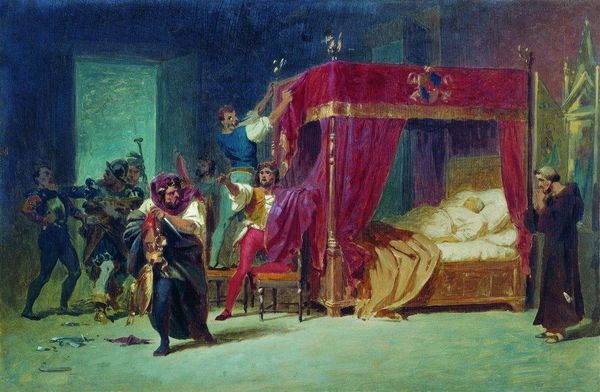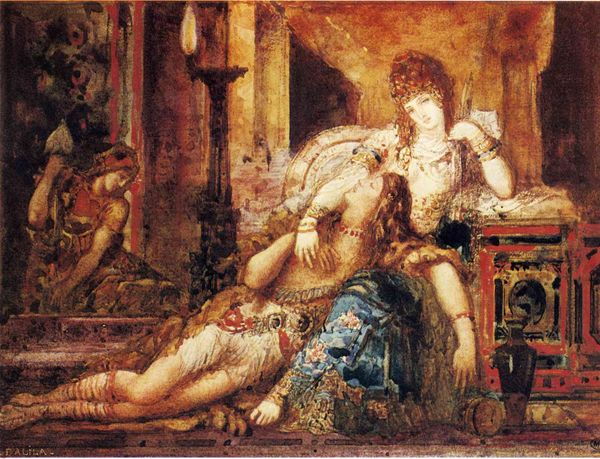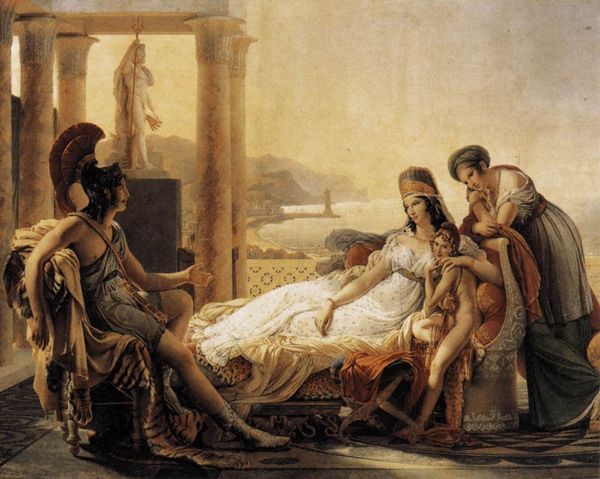
Paolo Da Malatesta and Francesca Da Rimini Surprised by Gianciotto Malatesta 1805
0:00
0:00
watercolor, ink
#
portrait
#
narrative-art
#
watercolor
#
ink
#
coloured pencil
#
romanticism
#
genre-painting
#
history-painting
#
watercolor
Dimensions: 33.5 x 26 cm
Copyright: Public domain
Curator: Joseph Anton Koch, a Swiss artist working in Rome, created this watercolor and ink drawing around 1805. It’s entitled “Paolo Da Malatesta and Francesca Da Rimini Surprised by Gianciotto Malatesta." The piece depicts a scene of betrayal and impending violence, sourced from Dante's Inferno. Editor: My immediate reaction is one of theatrical tension. The composition feels carefully staged, almost like a tableau. There’s a sharp contrast between the intimate moment of the lovers and the looming threat of the vengeful husband. It reads like an indictment of power and the violation of trust. Curator: Exactly. Koch draws from Dante's narrative about Francesca, forced into marriage with the deformed Gianciotto, only to fall in love with his younger, more handsome brother, Paolo. This illicit encounter, as we see it visualized here, is forever frozen in time due to Gianciotto’s wrathful discovery. What resonates, and why it continues to resonate in Western culture, are its timeless themes of forbidden love and inescapable punishment, ideas that permeated Romantic period art production. Editor: And I think it speaks to broader power dynamics, the lack of agency afforded to women, and the destructive consequences of arranged marriages. Look at Francesca's posture—she appears resigned, almost accepting her fate. Her agency is entirely removed. The entire drama plays out in what resembles her private bed chamber which she never, ultimately, has control over. It's heartbreaking. And those details like the color, the costuming--very painterly given that is an ink and watercolour on paper artwork. Curator: Certainly, her passivity underscores the tragic element. And to consider that Koch rendered this in delicate watercolors lends a poignant irony given the impending brutality. I also think Koch successfully uses this moment to build on the history-painting style that was predominant in the Neoclassical, Romantic and subsequent Academic period by bringing Italian poetry into a public, cultural sphere. Editor: Right. By drawing from literary sources, artwork gains additional layers of accessibility, adding commentary on not only its history painting but gendered relationships and class struggle which is not explicitly referenced, but hinted at in the visual storytelling within the piece. It highlights the potential for artworks to act as a lens through which audiences can read wider concerns relating to moral conduct, power struggles and human nature which still resonates in today's world. Curator: I agree; the beauty of the watercolor doesn't mask the horror of the scene, but actually intensifies it. Thanks to its complex web of characters it's still prompting dialogue to this day, across histories and social strata. Editor: Absolutely. Looking closely invites us to confront not just a literary moment, but also some truly uncomfortable societal realities that ripple across history.
Comments
No comments
Be the first to comment and join the conversation on the ultimate creative platform.
